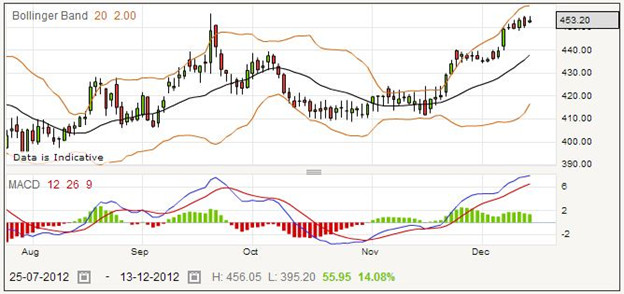Halma is one of those companies that has morphed beyond recognition since its inception. Its current course is an aggressive one, with notable volatility which makes it a suitable subject for spread betting. The daily price chart below shows the variability in price.

Originally founded in 1894 in Ceylon as a tea company, its first change of purpose was in 1937 when it started specializing in rubber production. As a result of nationalisation, in the 1950s the company became Halma Investments Limited, leaving behind both tea and rubber and concentrating on being an investment company.
Twenty years later the company decided to invest in mechanical, electronic, and electrical companies, and was renamed as Halma Limited in 1973. It has continued on its path of acquisitions, and now its market sectors include infrastructure sensors, health & analysis, and industrial safety. Thus it is now known as a company that makes products for life protection and hazard detection.
Halma’s stated objective is to double group revenue and profit every five years. It plans to do this by aggressive acquisition and organic growth. This is the reason for the selection of the specialist market sectors, which it sees as providing non cyclical growth and sustainable returns. Five years ago it was trading around the 210 level, so it seems to have achieved its aim in recent years.
Looking now at the trading opportunities in recent months, you can see that the share prices are trending much of the time, which is usually considered good for trading. The other requirement is that the trend is persistent enough to allow it to be identified and traded on before it weakens, and in this respect Halma tends to have relatively short “runs” of price. Quite possibly, these shares would be better spread bet on a shorter time level, looking at intraday charts.
Halma Rolling Daily
As mentioned previously, this is a volatile stock with rapid changes in trend, so the rolling daily spread bet may be the best way to play it. The current quote for a rolling daily bet is 450.97 – 453.23. Suppose for the sake of example you think that the price will be going up in the near term, you might want to place a buy bet, going long at 453.23 and staking perhaps £8 per point.
After a few days, say that the price has gone up to 486.31 – 488.65 and is now slowing, so you want to close the position and capture your winnings. Your long bet would close at 486.31. That means you have gained 486.31 minus 453.23 points with your bet, which works out to 33.08 points. Multiplying by your stake of £8, you will find that you have won £264.64.
With a volatile price, you might easily find yourself to be on the losing end of the bet, and needing to close it quickly to minimize your losses. If the price went down to 429.50 – 431.76, you can close your bet for a loss at the selling price of 429.50. 453.23 less 429.50 is 23.73 points, so you would have lost 23.73 times £8, which is £189.84.
With a fast-moving stock like this, it can make good sense to set up a stop loss order when you take out the bet. This means you will not suddenly find that the price has gone far beyond your stop level, giving you greater losses than you can handle. With a stop loss order, you might find that the bet would be closed by your broker at 437.23 – 439.56. That means that your bet opened at 453.23, and it closed at 437.23, a loss of 16.0 points. For your size of stake, that would cost you £128.
Halma Quarterly Futures
If you want to place a futures style bet on Halma, the current quote for the far quarter, which is about seven months away, is 451.66 – 457.12. Even though the bet does not expire for many months, you can close it at any time if you feel you have made sufficient profit, if you need to prevent further loss, or if it simply is not going anywhere and you want to move on.
Perhaps you might take a bearish view of Halma, and stake £5 per point on a sell bet at the price of 451.66. In due course, if the price goes down to 414.92 – 419.76, you could close your bet and collect your winnings. In this case, you would have made 451.66-419.76 points, which is 31.9 points. At £5 per point, this would be a profit of £159.50.
But say once you had placed your short bet the price went up, then you would be faced with the prospect of cutting your losses by closing your trade, simply to avoid the possibility of the price running further against you. If you get out of the position when the quote is 478.63 – 483.37, then your bet would close at the price of 483.37, the buying price. 483.37 minus 451.66 is 31.71 points, and that would cost you £158.55.
As an alternative, you may consider placing a stop loss order when you take out your initial bet. That way, you can have peace of mind if you are not able to get to a computer to check the prices, as your spread betting provider will automatically close a losing trade for you. With a stop loss order, you might find that this losing trade would have closed earlier when the price was 471.21 – 477.03. Your loss in points now is 477.03 less 451.66, 25.37 points, and multiplying this times your stake works out to a loss of £126.85.